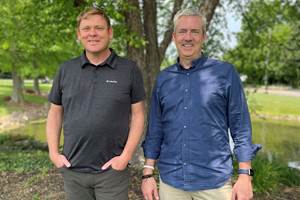Shooting trouble
CW launches The Troubleshooter, a new column designed to help you identify, assess and correct the technical challenges that can plague composites manufacturing operations.

Photo Credit: Getty Images
In February 1997, I was a senior editor (writer) at Injection Molding magazine, a now-defunct trade publication that, as the name implies, served the plastics injection molding industry. That month I took a trip to Oshkosh, Wis., U.S., to visit an injection molder that agreed to let me observe a machinery and process audit being performed by an industry consultant.
Like many injection molders, this facility operated a number of machines of various sizes and clamp tonnages, ranging in age from new to 20 years old, with the variation in technology and capability that such a time span implies. The purpose of this audit was to assess the mechanical health of some injection molding machines that the molder was concerned were not performing as well as desired.
At the time, I was new to Injection Molding magazine, but not new to the plastics industry. Still, this was my first visit to an injection molding facility and I was eager to learn all that I could. In particular, I was interested to learn how machinery health was assessed and diagnosed.
It’s in this spirit — systematic problem assessment and systematic correction — that CW has launched a new column called, appropriately, The Troubleshooter.
Most of my time at this facility with the consultant was spent with one injection molding machine — a 20-year-old HPM system with a 1,500-ton clamp. The molder was struggling to get the machine to consistently fill the mold, which led to mold cavities being partially filled (“short shot”). This led, in turn, to an increased scrap rate, which is one of many banes of a molder’s existence.
The plant manager knew this HPM machine had a problem, but he could not pinpoint the cause(s). It was the job of the consultant to perform an assessment, identify the cause and recommend a remedy. If you are an engineer who spends any time on the plant floor, you probably know what followed: A systematic, step-by-step measurement and analysis of each machine component and function. We assessed the capability of the injection ram, barrel temperature control, checked ring and hydraulic systems. We even used a UV camera to identify potential shorts in the electrical control cabinet (and found several).
So, what was the culprit causing the short shots on this HPM machine? If you’ve operated an injection molding machine, you know that one of the control parameters is injection rate. It turned out that the injection rate setpoint on the machine’s controller was not actually being performed by the hydraulically actuated injection ram. A simple distance/time calculation helped us make that determination. This then led us to the hydraulic system itself, which, being 20 years old, simply could not produce the pressure it once did. In short, no matter the injection rate setpoint, the machine could not meet it.
The lesson? What I learned at that Oshkosh molder was that any system — even a complex one — can be deconstructed and systematically analyzed to verify that it is meeting fundamental performance requirements. Further, I learned that such analysis can and should lead to good troubleshooting to bring the process back into compliance.
It’s in this spirit — systematic problem assessment and systematic correction — that CW has launched a new column called, appropriately, The Troubleshooter. We actually launched it in the February 2021 issue, and it continues this month on p. 6. It will appear in even-numbered months throughout the rest of the year.
The first Troubleshooter, authored by Lou Dorworth, direct services manager at Abaris Training Resources (Reno, Nev., U.S.), focuses on troubleshooting failures in adhesively bonded composite joints. This month’s Troubleshooter, authored by Yehiel Shaham, an Israel-based engineer and consultant, reviews potential trouble spots in laser-assisted tape winding of thermoplastic composites. Lou and Yehiel will continue to share writing duties for The Troubleshooter for the balance of the year.
The overarching goal of The Troubleshooter column is to help you, our audience, identify, assess and correct the technical challenges that can plague composites manufacturing operations. To that end, and to ensure the utility of The Troubleshooter, I would like to know the kind of material, tooling or processes problems you face in your composites manufacturing operations. Are there challenges that you would like to see addressed by one of our Troubleshooters? If there are, please email me at jeff@compositesworld.com and tell me, in as much detail as you can, the trouble you need help with. I will then work with our columnists to have your challenge addressed. I look forward to hearing from you.
Related Content
Up, not out: The next chapter of CompositesWorld
I have been editor-in-chief of CompositesWorld for 17 years, which translates into a lot of editorials. This will be my last as I become publisher of CW. We welcome Scott Francis back to the brand to take my place.
Read MoreCompositesWorld is on the road again
Since CW’s infancy, its editors have strived to imbue its coverage with a sense of place, whether that’s through plant tours, facility visits or trade shows. After a pandemic, this has never seemed more important.
Read MoreThe return of trade show season
SAMPE Seattle, JEC World and the Paris Air Show are approaching fast, and they signal the real emergence of a post-pandemic world.
Read MoreRemembering Don Adams
When one thinks of composites test methods, one thinks of Don Adams. Don passed away at the end of 2022. We remember him here.
Read MoreRead Next
Composites end markets: Energy (2024)
Composites are used widely in oil/gas, wind and other renewable energy applications. Despite market challenges, growth potential and innovation for composites continue.
Read MoreCW’s 2024 Top Shops survey offers new approach to benchmarking
Respondents that complete the survey by April 30, 2024, have the chance to be recognized as an honoree.
Read MoreFrom the CW Archives: The tale of the thermoplastic cryotank
In 2006, guest columnist Bob Hartunian related the story of his efforts two decades prior, while at McDonnell Douglas, to develop a thermoplastic composite crytank for hydrogen storage. He learned a lot of lessons.
Read More


















.jpg;maxWidth=300;quality=90)







